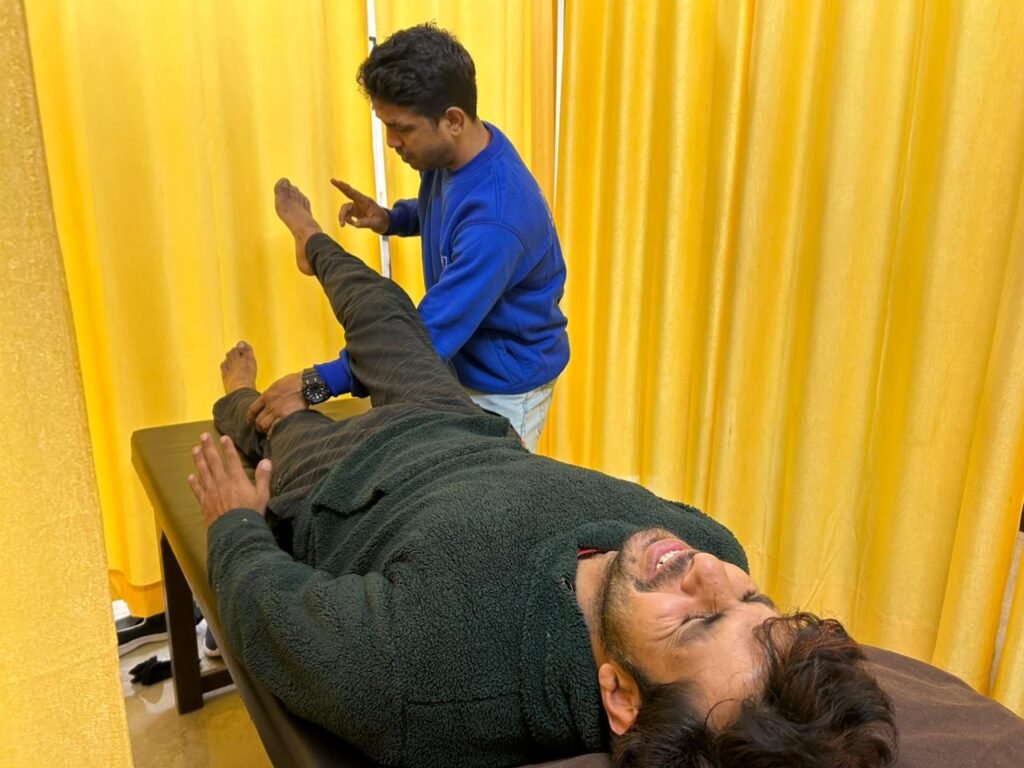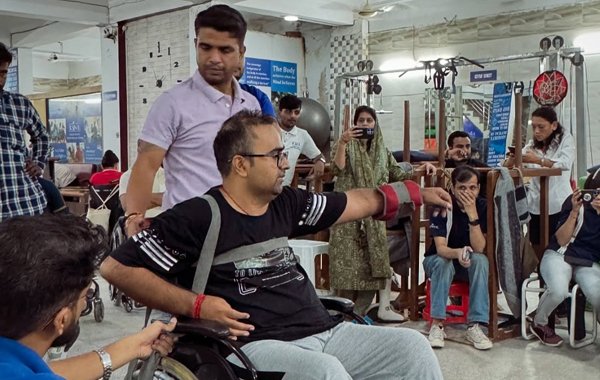Following a spinal cord injury, Spasticity is a common complication that can impact daily life and overall function. In this article we will discuss spasticity, its underlying causes, challenges and effective strategies for managing and overcoming the condition.

What is Spasticity?
Spasticity refers to the increased muscle tone and involuntary muscle contractions that often accompany spinal cord injury. It is a disruption in muscle movement pattern which is caused due to contraction of many muscles at once (sometimes called co-contraction). Spasticity can also be in the form of jerky muscle movements (spasms) or stiffness.
It is very common in individuals with SCI and gradually depends on the level and impact of injury. Individuals with cervical injury are more likely to have spasticity than individuals with lower level injuries. Spasticity can vary greatly in how it affects someone — it may be as mild as the feeling of tightness of your muscles or may be so severe that it causes painful, uncontrollable stiffness and spasms of your extremities.
Causes of Spasticity
Spinal cord works as a pathway which helps brain to communicate with other parts of the body. Spinal cord helps to send sensory information such as hot , cold, pain, movement, etc. from body to brain and vice-versa. Once the brain receives these sensory signals, it processes the information, and then sends the appropriate signals back down the spinal cord to tell the muscles how to respond.
However, when the spinal cord is injured the communication gets disrupted and due to which sensory information is unable to reach the brain. The lack of proper communication contributes to the hyperexcitability of spinal reflexes, which can results in muscle spasms.
Changes in neurotransmitter levels, particularly a decrease in inhibitory signals, play a role in the development of spasticity. This imbalance contributes to excessive muscle contractions.
The loss of supraspinal (above the spinal cord) control over reflexes results in unregulated muscle activity. The absence of inhibitory signals from the brain contributes to heightened muscle tone.
Challenges and Benefits
There are a lot of challenges or difficulties faces by individuals due to spasticity.
- Spasticity can significantly impact mobility, making it challenging for individuals with SCI to move freely.
- Prolonged stiffness or spasticity can limit the range of motion in your joints. This may lead to joint contractures, which can cause structural changes in the affected joints.
- Sometimes the spasticity can be so severe that it can cause unbearable pain to the individuals.
- Spasticity can make movement so hard which complicate tasks like dressing, grooming, and bathing, making independent self-care more challenging.
- Repeated muscle spasms at night can cause difficulty in sleeping which may impact fatigue and mental health.
- Severe spasm can make individuals fall out of the wheelchair, if not taken care properly.
- Spasms in bladder can lead to leakage of urine which may results in UTI.
However, there are so many many difficulties faced by people with SCI due to spasticity but it has some benefits as well.
- The muscle contractions associated with spasticity can enhance blood circulation, reducing the chances of vascular complications. Improved blood flow contributes to overall cardiovascular health.
- Regular muscle contractions can assist in joint flexibility and reduce the risk of joint immobility.
- Stiffness causes fingers to bend which helps in holding things and grip objects.
- Spasticity can provide a degree of postural support, aiding individuals with SCI in maintaining certain positions.
- It minimizes the risk of pressure sores associated with prolonged immobility.
Strategies for Overcoming Spasticity
There are various ways to overcome spasticity. Though there’s no cure for spasticity, these treatments can help alleviate symptoms and improve quality of life.
1. Physical therapy/ Rehab exercises
Engaging in targeted physical exercises can help manage spasticity. Rehab exercises like weight bearing, prone lying (lying on stomach) help stimulate the nervous system and activate neuroplasticity. Exercising consistently also helps reduce the excitability of hyperactive muscles.
Therapists can design personalized routines to stretch and strengthen muscles, improving overall mobility. It can also help in reducing muscle spasms and getting range of motion over the time.
2. Medications
Muscle spasms can cause severe pain and can be very discomforting at times. There are some medicines which healthcare professionals can prescribe to overcome the pain and discomfort. However, it is advisable to take these medications only when it’s needed and not on regular basis.
For severe spasticity cases, baclofen pumps are used for delivering muscle relaxant directly to the spinal fluid. This targeted approach can effectively reduce spasticity levels.
3. Orthotic Devices
Implementing orthotic devices, such as braces or splints, can aid in supporting joints and controlling spasticity. These devices helps to improve mobility and enhance overall comfort.
Additionally, we can prevent deformities caused by spasticity by using the orthotic devices which helps to maintain range of motion of an individual.
4. Botox Injection and Surgery
Botulinum toxin injections, commonly known as Botox, are a medical treatment option for managing spasticity, particularly in conditions like stroke and spinal cord injury. The injections are injected directly into specific muscles to get temporary relief from spasticity.
Surgical treatment is also a type of treatment for spasticity. Although, we should consider surgical treatments for spasticity only in cases where conservative approaches, such as physical therapy and medications, have not provided sufficient relief.
Additionally, It’s important to note that surgical interventions and Botox treatment for spasticity are typically reserved for cases where other treatments have not been effective, and the decision to undergo surgery should be carefully considered after consulting with consult with a multidisciplinary team of healthcare professionals. The choice of surgery depends on factors such as the underlying cause of spasticity, the severity of symptoms, and the individual’s overall health.

